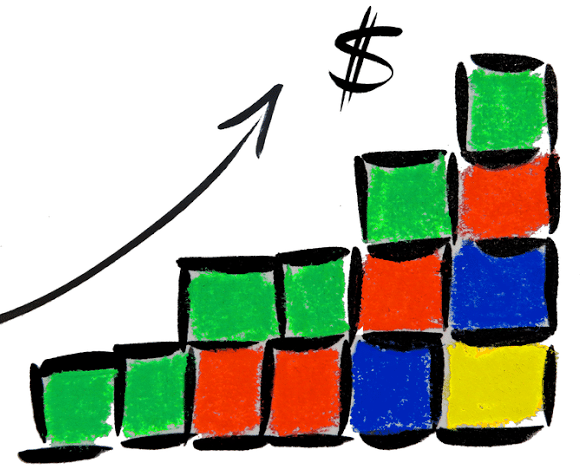4 Key Sales Metrics (With a Twist)
a lot of people ask me what the most important metrics are to track. metrics are definitely always helpful, but they don’t always tell you the whole picture. here’s a piece around that i’m sharing from my new book “From Impossible to Inevitable co-written with jason lemkin.
4 Key Sales Metrics (With a Twist)
It’s common for sales teams beginning to scale up to see win rates drop. Is it because of the new people? Has lead quality or management quality changed? Or because of packaging, pricing or website changes?
You need to drill down and see exactly where opportunities are falling off, in order to get to the root cause. Look at your sales funnel and understand conversions through every stage through to closed-won. If most reps are struggling in the same area, then don’t blame them; it might be something outside their control. Nominate an investigator to find the truth of what’s going on.
Don’t be too quick to jump to conclusions and criticize or compliment anyone on the team right away. First look at their data first to find out why and learn from it. A sales rep with highest consistent win rate may be talented at sales –– or talented at sandbagging/cherry picking. Don’t assume –– investigate. Look at win rates with other data to get the whole story. That being said, here are the numbers to know:
4 Key Metrics
1.) Number of Open Opportunities in total and per rep: Measure the total number of open opportunities each rep is working at any given time, and understand how many total new opportunities they should be getting per month –– not too few, and not too many. What to do with it: Your reps should get a sufficient inflow of new opportunities to have a steady number to work in their pipeline:
(a) giving them enough opportunities to hit their number, but
(b) without overwhelming them so balls start dropping.
A common number for a SaaS rep doing low-five-figure deals to juggle is 25-30 opportunities. Yours may or may not be different. For yours, look to your own history. How many have your best reps juggled? Does it vary much by segment, type of customer or average deal size? When was it too many? This metric also gives you a sanity check if you need to grow your open opportunities a lot (by cranking up lead generation), or if your team is overwhelmed (and you need to hire more salespeople).
2) Number of Closed Opportunities in total and per rep: Measure total opportunities closed including both closed-won and closed-lost opportunities. What to do with it: Your reps should be closing a certain number of sales deals each month (whether won or lost). It’’ s a form of “throughput”. If they’re not closing enough total opportunities, drill down: Are they light on deals? Not closing effectively? Are they not updating the sales system?
3) $ Deal size: Measure the average value of your closed-won deals. What to do with it: Knowing this metric will make it easy for you to spot opportunities that fall outside the normal deal size (say 3x greater than average) and flag them for special attention. Also, if the trend shows an increase in smaller deals won, perhaps some reps are focusing on small fish. Or perhaps your reps are increasing discounts. If you see a new trend in average deal size, dig into your pipeline mix or discounting practices to understand why.
4) Win rate: Measure the number of closed opportunities, in a specific closing period, that you won (Closed Won Opportunities)/(Total Opportunities: both Closed-Won + Closed-Lost). This won’t mean much unless you can watch it trend, or use it to A/B test reps with similar segments, or compare against companies similar to yours. What to do with it: “High” win rates aren’t good; “low” ones aren’t bad –– either one gives you a chance to get smart about your sales system, to spot areas of success or problems.
If your win rate is high, your pricing may be is too low! The simplest way to start increasing your team’s win rate is to find the one or two most problematic steps in your process, and then look both “inside” (e.g., a better demo process) and “outside” the team (e.g. an easier free trial, or simpler pricing)…
for more, download a free chapter of my new book co-written with jason lemkin, “From Impossible to Inevitable”.
thanks,
– air
pps: my buddy keenan from a salesguy.com has a book on amazon i think you’ll like called “Not Taught: What It Takes to be Successful in the 21st Century that Nobody’s Teaching You“, and it’s for anyone looking to accelerate and take their career to the next level. the book uncovers how the success game has flipped and what it takes now to connect with larger audiences and have greater influence. definitely check it out.ppps: here’s another pic of our new baby girl, rose arya <3 <3 <3
